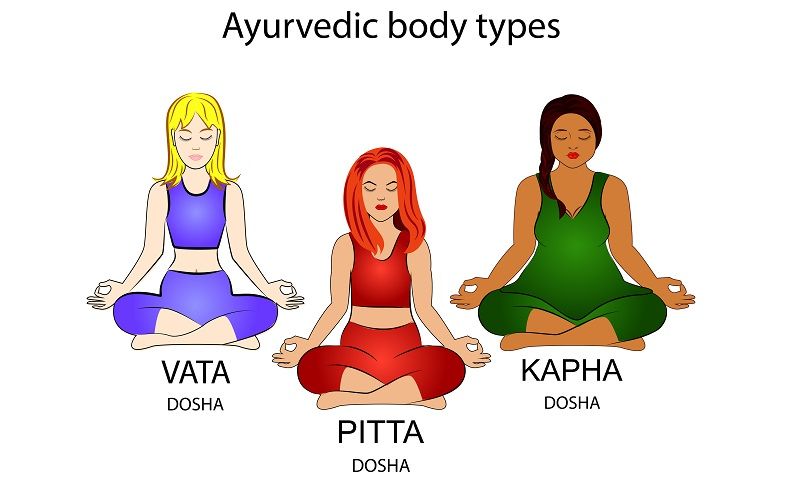According to Ayurveda, Vata dosha is made up of the two elements; air and space, and plays a vital role in the way our mind and body functions. Vata dosha is critical to elimination of body waste, sweat secretions, breathing and flow of blood. They also govern thoughts, pain, fear, creativity and other emotions. Vata dosha qualities include dry, rough, cold, light, dry, always moving, changeable and unlimited. A need for change characterizes people with predominating Vata dosha, and as long as the Vatta is in balance and harmony with itself and other doshas, the individual will be energetic, lively and acceptable to changes.
Diet plays a very important role in harmonizing Vatta balance. Taste like sweet, sour and salty are good for balancing Vatta, whereas bitter, pungent and astringent tend to aggravate this dosha. Consumption of foods that are oily, heavy or warming should be given more prominence to balance Vatta. It is best to avoid cold beverages and foods.
 A Vatta balancing or pacifying diet should include Herbal Ayurvedic teas, sweet, sour and salty foods as opposed to pungent or astringent ones. It is best to avoid cold beverages and foods.
A Vatta balancing or pacifying diet should include Herbal Ayurvedic teas, sweet, sour and salty foods as opposed to pungent or astringent ones. It is best to avoid cold beverages and foods.
Following is a list of what should be eaten and drunk to balance Vatta dosha:
Fruits: Natural sweeteners present in fruits such bananas, apricots, avocados, grapefruits, papaya, peaches, grapes, cherries and mangoes and papayas are good for Vatta people, whereas astringent fruits such as apples, pomegranate, cranberries and pears must be avoided.
Grains: Rice varieties of white, brown red and wild along with oats and wheat is very good for Vatta people. However, grains such as rye, barn, millet, barley and granola aggravate Vatta dosha.
Vegetables: Sweet vegetables such as beets, cucumber, carrots and cooked sweet potatoes are very good with Vatta people. However, other vegetables such as leafy vegetables, green peas, cauliflower, beans and broccoli can be eaten in moderation when cooked in ghee. Cabbage should be avoided.
Nuts: All nuts when eaten in moderation are good for balancing Vatta. Not more than two pieces of three different types of nuts a day are recommended by Ayurvedic practitioners.
Dairy: All dairy products are believed to help balance Vatta dosha. Milk should always be taken warm, and before or after a light meal. Dairy products help to pacify Vatta dosha.
Herbal Teas and Spices: Moderate and regular use of cumin, cardamom, cloves, salt, fennel, basil, sage, thyme, cinnamon, ginger, mustard seed, asafoetida, tarragon and black pepper helps to pacify Vatta. You can use Vatta balancing tea, which has the blend of the recommended spices.
Beans: All beans, except tofu, Aduki and mung should be avoided. Even these three should be eaten in moderation.
Meat: Although, Ayurvedic diet relies more on vegetarianism, meat consumers should stick to fresh white meat and in moderation to balance Vatta.
A Vatta balancing or pacifying diet should include Herbal Ayurvedic teas, sweet, sour and salty foods as opposed to pungent or astringent ones. It is best to avoid cold beverages and foods. Vatta dosha, when kept in balance enhances an individual’s creative and lively side.
You can learn the techniques of stress reduction, mind and thoughts control and start emotional healing in 7 days retreat. The Emotional Healing with Plant Medicine Retreat in Peru will help you to start the process of healing your emotions; will teach you stress management and stress reduction techniques , including all mentioned above and much more.
